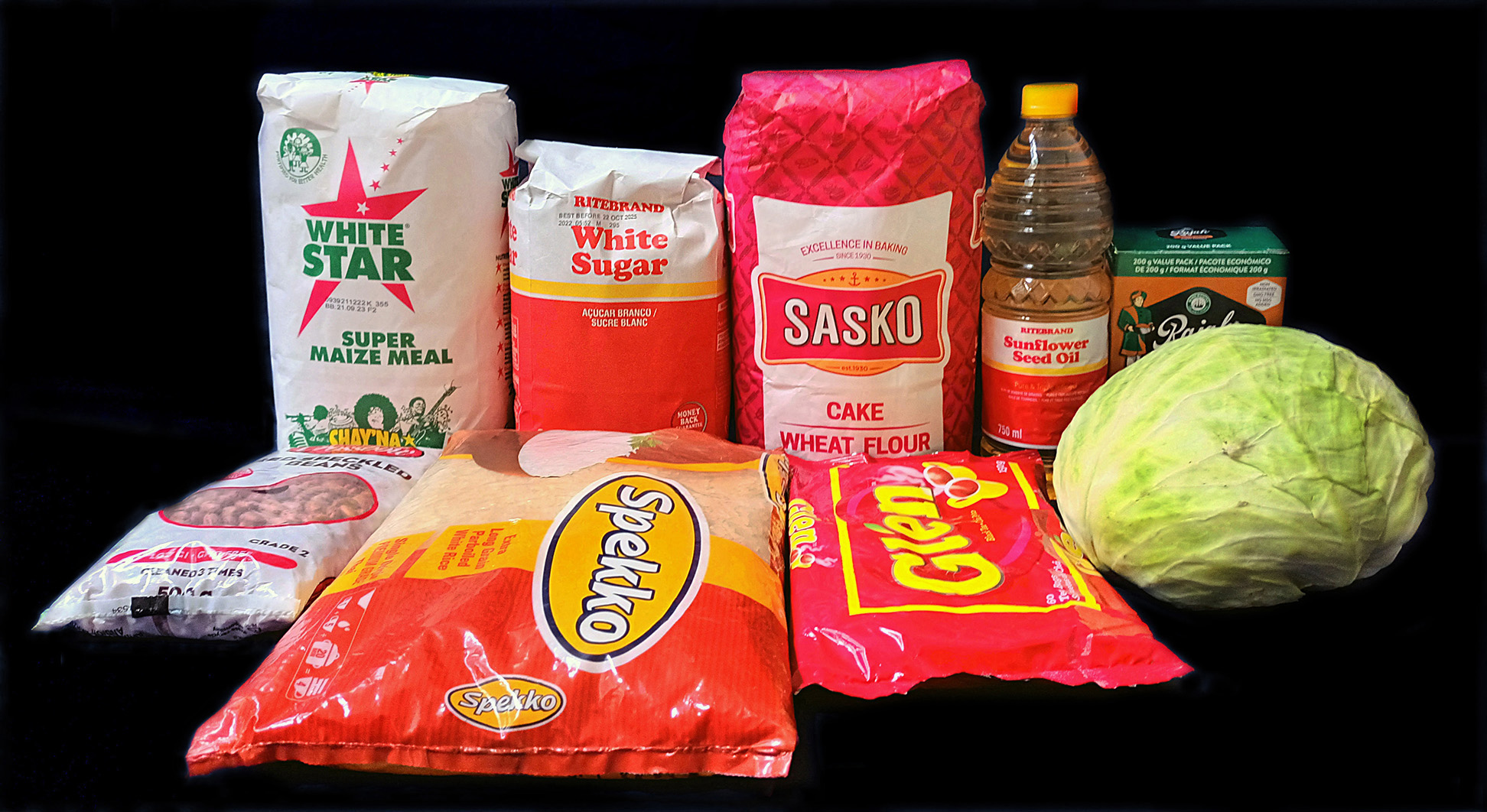Maverick Citizen has been tracking the prices of 14 basic food items that a consumer can buy with R370, the amount of the Social Relief of Distress (SRD) grant. The food basket hovers above R400, making it unaffordable for those who receive the grant as their only source of income.
We have done our calculations and the food basket would cost R58 rand more, if Value Added Tax (VAT) was 17%. All eyes are on Finance Minister Enoch Godongwana, who will present this financial year’s Budget speech on 12 March 2025. Much of the minister’s financial decisions will affect those living in poverty, but one of the main concerns is the implications of a possible VAT hike on buying power for grant recipients.
Elizabeth Raiters, an activist for access to social grants said: “The VAT increase would be devastating for beneficiaries who already can’t afford a lot of basic foods. If they increase, say the old age grant by R150, the beneficiaries would not get the benefit of the increase. The government should really consider the impact as the poorest of the poor are barely accessing basic food now,” said Raiters.
On Wednesday the Healthy Living Alliance (Heala) released a statement saying it was disappointed with Godongwana.
 “Tax sugary drinks, not the poor!” the health rights advocacy alliance stated. “We are adamant that a 20% sugar tax increase would curtail the prevalence of non-communicable diseases in South Africa and increase the fiscus. VAT is not the solution.”
“Tax sugary drinks, not the poor!” the health rights advocacy alliance stated. “We are adamant that a 20% sugar tax increase would curtail the prevalence of non-communicable diseases in South Africa and increase the fiscus. VAT is not the solution.”
The alliance said South Africans understood that the country was in debt and that the government had the responsibility to come up with innovative ways to raise additional revenue for the fiscus.
“As the Healthy Living Alliance, we believe the proposed increase in VAT is not the solution as this increase would bring millions of South Africans closer to poverty and economic disaster,” the statement read.
Read more: Petition to SA ministers of finance and health — don’t hike VAT, raise tax on harmful products
In February’s instalment of the Household Affordability Index, the average cost of the foods prioritised and bought first in the household food basket decreased by R47.89 (-1,6%) from R2,936.63 in January 2025 to R2,888.74 in February 2025. But year-on-year the average cost of the foods prioritised and bought first in the household food basket increased by R78,50 (2.8%) from R2,810.24 in February 2024 to R2,888.74 in February 2025.
This despite food inflation staying under 3% this year compared with 4% last year this time.
The index highlights that this basket of core foods informs us what is bought first, and these foods ensure that families do not go hungry while ensuring that meals can be cooked.
“When the prices of core foods increase, there is less money to secure other important mostly nutritionally rich foods, which are essential for health and wellbeing and strong immune systems (viz. meat, eggs and dairy which are critical for protein, iron and calcium; vegetables and fruit which are critical for vitamins, minerals and fibre; and maas, peanut butter and pilchards, good fats, protein and calcium essential for children. The data shows that the core foods contribute 54% of the total cost of the Household Food Basket,” the Household Affordability Index reads.
At an average cost of R2,888.74 in February 2025, “these foods are relatively very expensive in relation to the total money available in the household purse to secure food. These foods must be bought regardless of price escalations,” the Household Affordability Index says.
Stats SA’s Consumer Price Index shows that food and non-alcoholic beverages increased by 2.3% in the 12 months to January. This is a lower increase than the 2.5% registered in December 2024.
“Inflation slowed for meat; fruits and nuts; sugar, confectionery and desserts; fish and other seafood; and milk, other dairy products and eggs. Cereal products, hot beverages, cold beverages, oils and fats, and vegetables registered higher rates,” the index reads.
Although food inflation has kept a steady decline, general consumer inflation was 3.2% in January 2025, up slightly from 3.0% in December 2024. This can be influenced by factors such as fuel prices rising for a third consecutive month.
“The fuel index witnessed its third consecutive monthly rise, increasing by 0.9% in January compared with December. This took the annual rate to -4.5% from -10.2%. The price for inland 95 octane petrol, for example, was R21.59 in January, up from a recent low of R21.05 in October 2024. This contributed to the rise in overall transport inflation, which edged higher to -0.2% from -2.0% in December,” the index reads
“The high cost of core staple foods results in a lot of proper nutritious food being removed from family plates. The consequences of high costs on the core foods has a negative impact on overall household health and wellbeing, and child development,” according to the index. DM




 (Graphic: Rudi Louw)
(Graphic: Rudi Louw) 